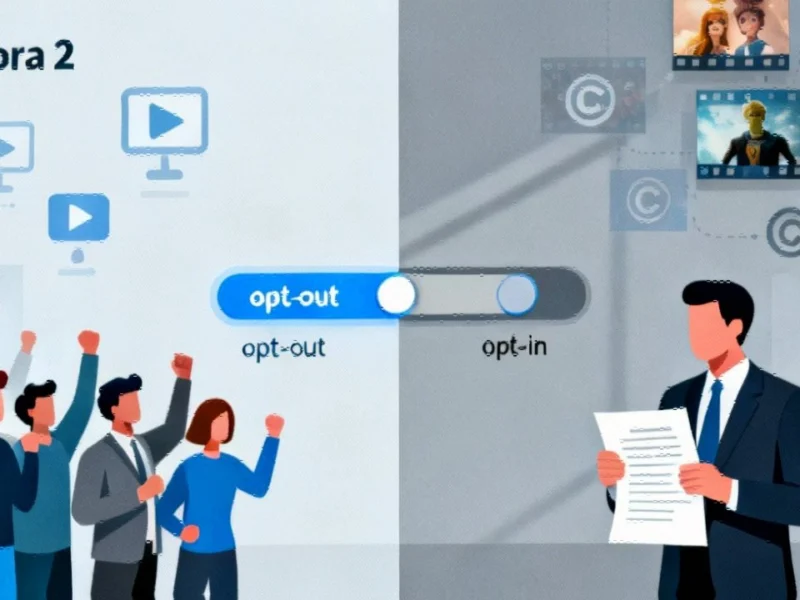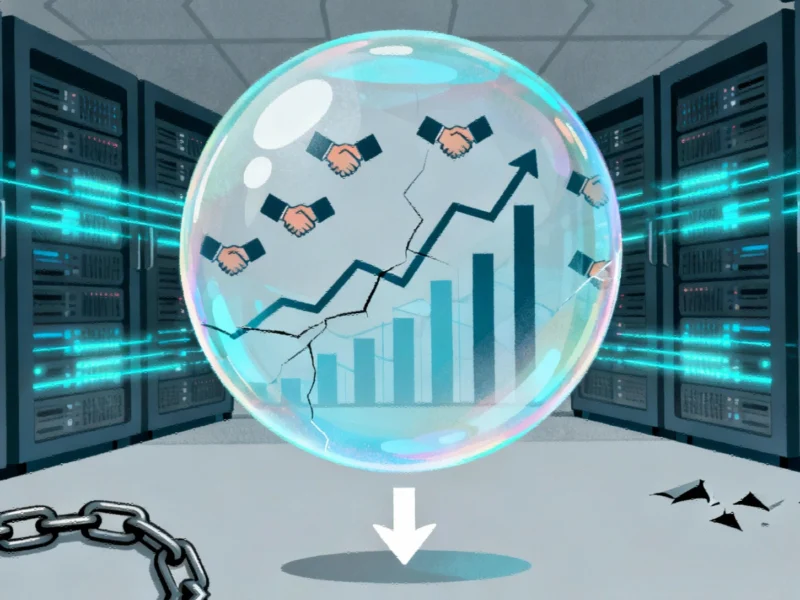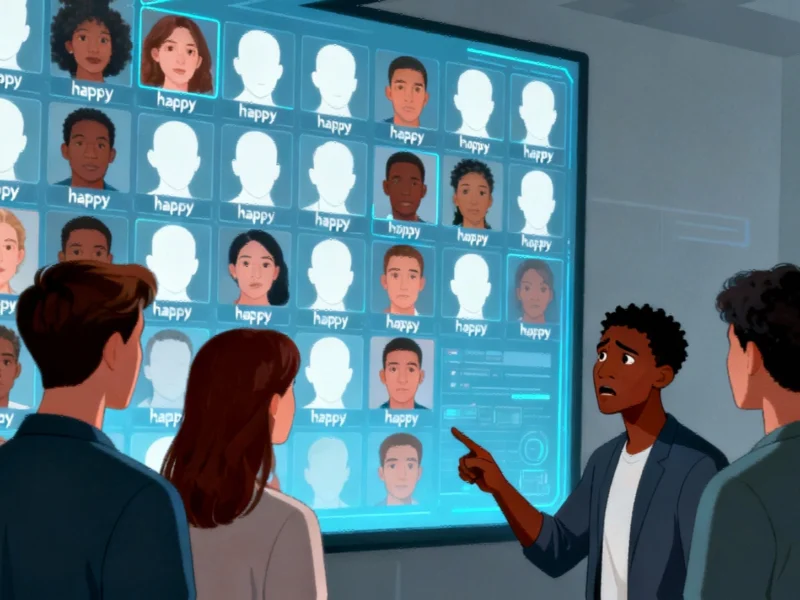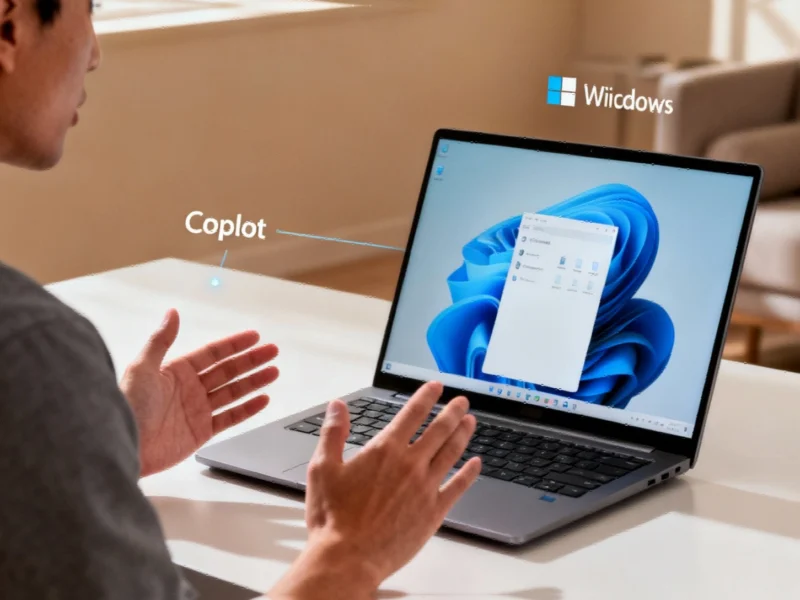Note: Featured image is for illustrative purposes only and does not represent any specific product, service, or entity mentioned in this article.
The Copyright Flip-Flop That Shook the Tech World
When OpenAI launched its Sora 2 video generation app on September 30, the company appeared to take a calculated gamble on copyright enforcement—one that backfired spectacularly within just 72 hours. The initial opt-out model placed the burden on intellectual property owners to protect their assets, resulting in what many described as a “digital free-for-all” of copyrighted content generation.
The controversial launch strategy allowed users to create videos featuring characters from major franchises like SpongeBob SquarePants and South Park until rightsholders discovered the infringement and manually opted out. This approach stood in stark contrast to the protections afforded to individual users, who received stringent controls over their likenesses from day one.
The Legal Tightrope: Shifting Responsibility to Users
OpenAI’s Terms of Use for Sora 2 attempted to establish what legal experts call “plausible deniability” by explicitly prohibiting users from infringing on rights while simultaneously providing the tools to do exactly that. The terms state users must have “all rights, licenses, and permissions needed” for their content, effectively shifting legal responsibility from the company to individual users.
This legal framework raises significant questions about corporate accountability in the age of generative AI. As detailed in coverage of OpenAI’s copyright policy challenges, the company has faced increasing scrutiny over its approach to intellectual property rights across its product ecosystem.
The Sudden Reversal: Damage Control or Planned Strategy?
On October 3, OpenAI CEO Sam Altman announced a complete reversal, transitioning Sora 2 to an opt-in model that gives rightsholders “more granular control” over their intellectual property. The swift implementation included an overinclusive filtering system that flags even vaguely worded prompts associated with third-party content.
Industry analysts question whether this rapid about-face resulted from external pressure, including Hollywood’s backlash and recent high-profile lawsuits against other AI companies. The timing coincides with significant market trends affecting technology investments and regulatory approaches to emerging technologies.
The Training Data Dilemma: Unanswered Questions Remain
Even after the policy change, crucial questions about Sora 2’s training data remain unanswered. OpenAI has not clarified whether copyrighted material used during development will be purged from the system. A rightsholder who opts out may prevent direct output of their intellectual property, but they cannot control how their copyrighted material has already influenced the AI’s underlying models.
This situation reflects broader industry developments in data management and AI training methodologies, where the boundaries between inspiration and infringement remain dangerously blurred.
The Business Model: Revenue Sharing After the Fact
Altman’s proposed solution involves revenue sharing with rightsholders who opt-in, but this raises questions about the fundamental ethics of the initial launch strategy. If effective guardrails could be implemented within days, why weren’t they included from the beginning?
Some commentators suggest the initial opt-out approach was deliberately designed to generate engagement and media coverage through controversy. This strategy aligns with related innovations in technology marketing that prioritize user acquisition over regulatory compliance.
The Precedent: A Dangerous Pattern in AI Development
OpenAI’s “infringe first, apologize later” approach appears to be establishing a troubling pattern in AI development. By placing the burden of enforcement on rights holders and leveraging the scale of user infringement, companies can create market momentum that later enables them to negotiate from a position of strength.
This cycle—drive engagement through infringement, create value, then license after the fact—represents a fundamental challenge to traditional copyright enforcement models and raises questions about whether current laws can keep pace with rapidly evolving AI capabilities.
Looking Forward: Uncertainty in the AI-Copyright Landscape
The future of generative AI and copyright remains uncertain as rightsholders weigh whether to opt-in to Sora 2’s new model. The decisions made by major studios, individual creators, and celebrity estates will shape not only OpenAI’s business prospects but the entire landscape of AI-generated content.
What remains clear is that the Sora 2 saga represents a pivotal moment in the ongoing tension between technological innovation and intellectual property rights—one that will likely influence regulatory approaches and corporate strategies for years to come.
This article aggregates information from publicly available sources. All trademarks and copyrights belong to their respective owners.



